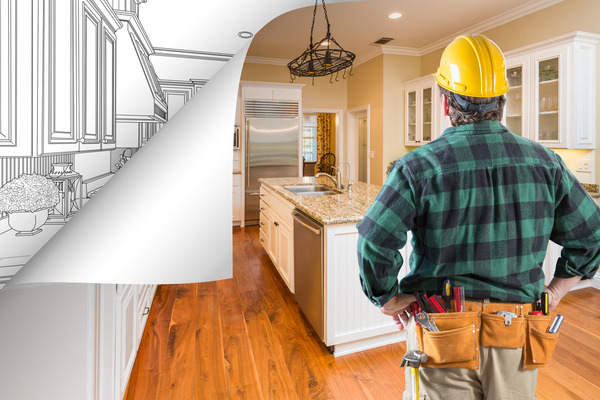The Real Cost of Flipping a House
Posted: January 11th, 2021
The world of house flipping we see on HGTV is glamorous and fun. Reality show hosts seem to waltz into their home flipping project of choice, smash a couple walls with a sledgehammer, and present a fully-updated home by the end of the episode. Usually, shows like “Fixer Upper” and “Flip or Flop” give viewers an idea of the homeowners’ intended and final budgets, but is there anything they’re leaving out of the equation?
In real life, flipping a house involves a lot more sweat and hard work than what we watch on TV. It also involves a lot more than just the purchase price of the property and some power tools. When your ultimate goal as a house-flipper is to earn a positive return on your investment, it’s critical that you weigh the real cost of your project against your potential income. You’ll need to account for a number of factors when determining the real cost of your project.
How Much Work Does it Need?
This is the biggest and most obvious question when you’re getting into a house-flipping project. The cost of a fresh coat of paint and some minor hardware replacements is minuscule compared to complete bathroom and kitchen renovations or add-ons. It can be tempting to pick up a house that needs a lot of work because of its low price point, but when all is said and done, you may wind up paying more than you intended.You also need to ensure that you don’t price yourself out of the neighborhood with your renovations, so there’s a fine balance to strike.
Many people who are new to flipping homes try to knock out much of the manual labor on their own and wind up frustrated and far behind schedule. Keep in mind that if your property’s bathroom or kitchen need work, you will most likely need to leave the job in the hands of a trained professional. Damaging complicated electrical or plumbing systems is guaranteed to throw you off schedule and cost a pretty penny to get everything back to the way it should be.
How Long Will the Project Take?
They say time is money. That saying has never been truer than it is in the case of house flipping. Taking on a renovation project with an extended timeline will inevitably be more expensive than a quick flip. Keep in mind that while you work on the house, you’re still paying mortgage, property taxes, utilities, and insurance. Even a minor setback in your schedule can lead to thousands of dollars in additional expenses each month.
It may not seem as fun, but we recommend that you look for a property that needs minimal repairs and upgrades before it’s ready for tenants, at least for the first few times you purchase investment property. You’ll be able to put your property on the market sooner and won’t have to face ever-increasing maintenance costs while you wait for repairs. If you’re looking for a little bit of the house-flipping experience, seek a property that needs minor cosmetic repairs that are manageable for you and a friend or two.
How Do I Know if It’s Worthwhile?
Before you even start looking at available investment properties in Brevard County or your selected market, you need to crunch some numbers. Your Realtor can help you determine a reasonable budget, get a clear picture of your after-repair value, and calculate your potential return on investment. Taking the time to figure out this information before you start can help you determine whether or not a project is even worth your time.
Regardless of your experience level, working with an experienced real estate professional can help take a great deal of stress off your shoulders when you’re getting ready to flip a house. Not only can they help you choose the right property to flip, they can also put you in touch with trustworthy contractors and help you market your home when the project is finished. When you’re ready to enter the Brevard County investment market, call Ellingson Properties at 321-750-7050 to get in touch with one of our team members.

